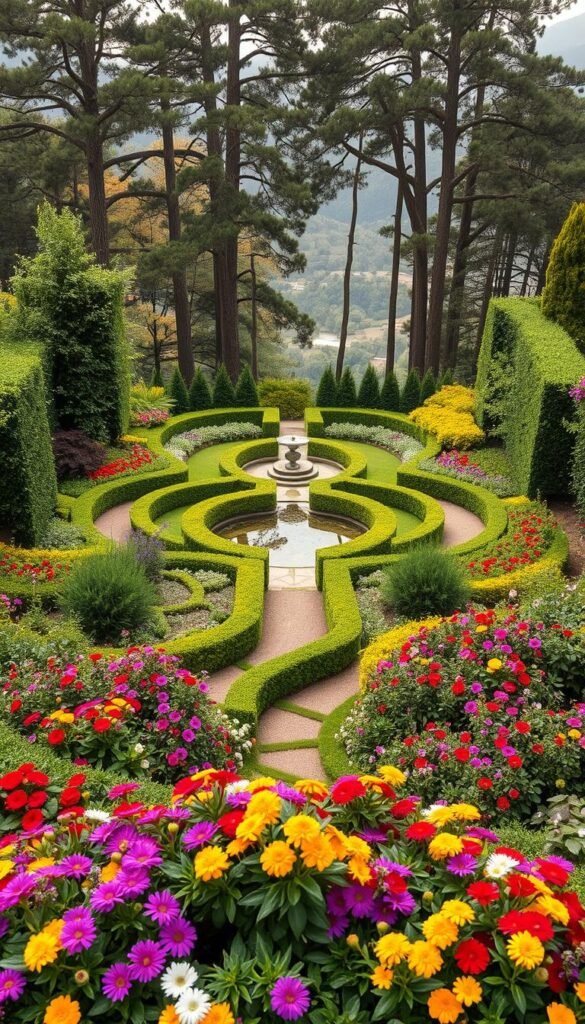Imagine transforming your outdoor space from a chaotic patch of dirt into a thriving retreat. That’s exactly what happened when one homeowner discovered the joy of gardening after years of thinking they lacked a green thumb. Their journey began with wilted lavender on a shady balcony but evolved into a lush, four-season garden through trial, error, and research from trusted sources like the RHS website.
Your home’s outdoor area holds unique potential, whether you’re working with a compact patio or sprawling yard. The secret? Design decisions rooted in your space’s natural rhythms. North-facing walls, afternoon sun patterns, and soil types aren’t obstacles—they’re your blueprint for success.
Rushing into planting often leads to wasted time and money. Instead, observe how light moves across your garden throughout the day. Notice where water pools after rain. These insights help create zones that flourish year-round, from sunny herb corners to shaded fern nooks.
Great design isn’t about copying magazine spreads. It’s about crafting spaces that match your lifestyle while working with nature. You’ll learn to balance immediate wins—like container gardens—with long-term projects such as perennial beds. This approach builds confidence while preventing overwhelm.
Whether starting fresh or updating existing features, patience pays off. Those first crooked tomato stakes and sun-scorched hostas become stepping stones to a garden that grows alongside your skills. Ready to turn your outdoor area into a cohesive sanctuary? Let’s dig into the fundamentals that make transformations possible.
Understanding Your Garden Space
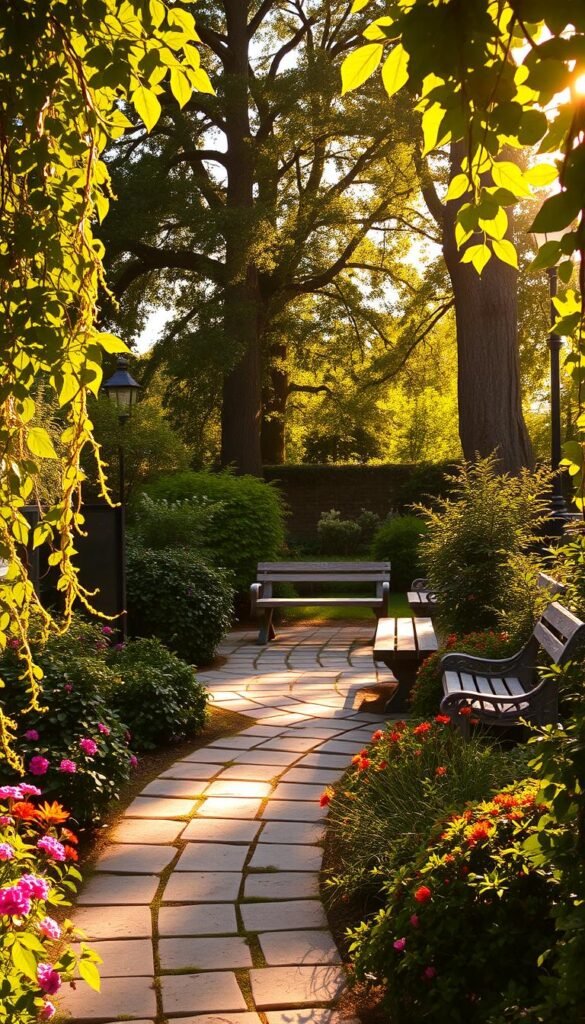
Unlocking your garden’s potential starts with knowing its unique personality. Grab your smartphone and stand at the far end of your plot – that compass app reveals more than direction. It shows how sunlight dances across your space through seasons, shaping what thrives where.
Assessing Sunlight and Shadow
Track how light moves every three hours – morning rays might hit your patio but skip the back fence. One gardener discovered their “sunny” corner only got warm light after 2 PM. South-facing gardens bake like cookiesheets, while north-facing ones stay cool as cucumber sandwiches.
Analyzing Garden Size and Existing Features
That stubborn oak tree isn’t a problem – it’s free shade for hydrangeas. Sketch your garden’s permanent elements first, even if it’s stick figures on napkin paper. Urban plots often hide cozy nooks between walls, while open yards might need windbreaks. Your space size decides whether you’ll host barbecues or create secret reading corners.
Watch where rainwater pools – those areas beg for thirsty ferns. Coastal gardens need tough plants that laugh at salty breezes. Remember, your plot’s quirks aren’t limitations – they’re what make your garden unmistakably yours.
A Beginner’s Guide to Creating a Cohesive Garden Design Plan
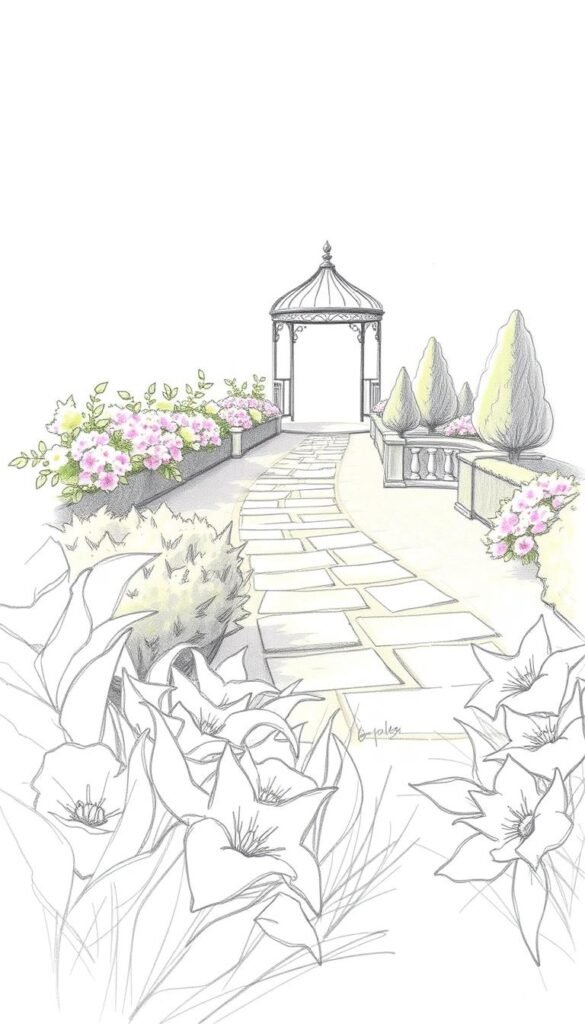
Your garden’s story begins with a blank page and a pencil. Grab any paper – napkins work – and sketch rough shapes showing patios, trees, and permanent fixtures. This visual map becomes your playground for ideas, helping you see where sunny seating areas could bloom or where herbs might thrive near the kitchen.
Clarify Your Vision
Ask: “What makes my heart sing when I step outside?” One family transformed their sloping yard into tiered play zones with hidden strawberry patches. Others prioritize meditation corners with rustling grasses. Your space should reflect your daily rhythms, not Pinterest trends.
Match Style to Lifestyle
Compare formal rose gardens needing weekly pruning to wildflower meadows that thrive on neglect. This table helps narrow your style:
| Garden Type | Key Features | Weekly Care |
|---|---|---|
| Formal | Symmetrical hedges, roses | 4-6 hours |
| Cottage | Mixed flowers, winding paths | 2-3 hours |
| Modern | Clean lines, evergreens | 1-2 hours |
| Wildlife | Native plants, water sources | 30 minutes |
Jot down non-negotiable needs like dog-friendly turf or raised beds for bad knees. Then list dream elements – maybe a firepit or koi pond. This design filter prevents overspending on impulse buys.
Watch Love Your Garden for clever small-space solutions, or browse local botanical gardens. Notice how professionals balance color and texture. Your sketch will evolve, just like your relationship with the land.
Sketching Out Your Garden Zones and Layout
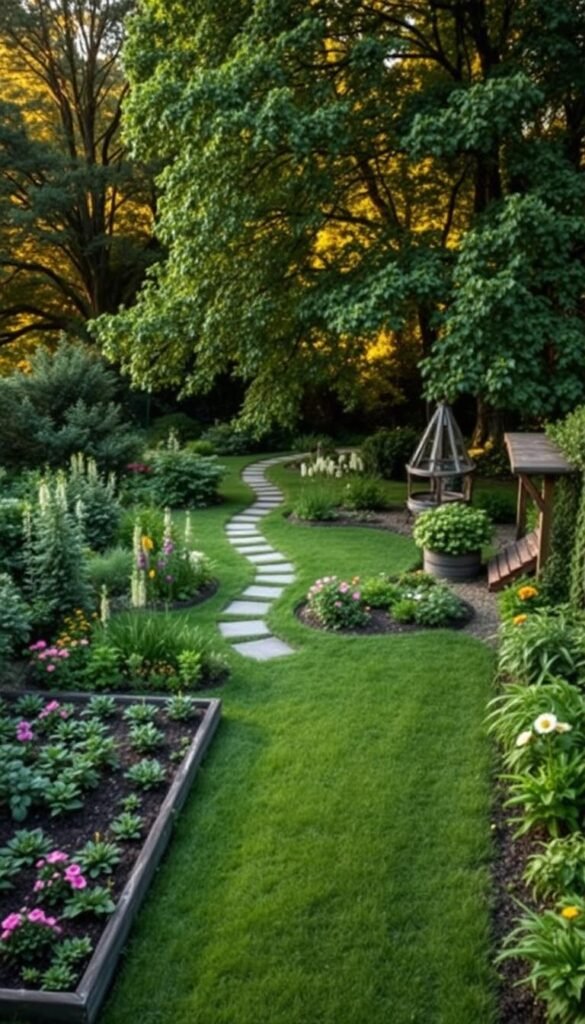
Crafting a garden layout is like designing rooms in your home—each with its own function. Start by mapping activity hotspots based on sunlight patterns and daily routines. One gardener transformed their L-shaped plot into five distinct zones, proving even narrow spaces can multitask beautifully.
Dividing Spaces for Function and Beauty
Create zones that serve specific purposes while enhancing visual flow. The L-shaped garden example includes:
| Zone | Purpose | Key Features | Best Time Used |
|---|---|---|---|
| Bottom Patio | Potting Area | Shady by noon | Morning |
| Near House | Family Seating | Sheltered, sunny | Daytime |
| Sunny Patio | Afternoon Coffee | Full sun, arbour | Afternoon |
| Vegetable Patch | Growing Produce | Protected area | All day |
Mapping Sun, Wind, and Shade Zones
Track microclimates using free apps like Sun Seeker. Morning sun zones suit breakfast nooks, while wind-protected areas become perfect reading corners. This approach helped one family design their garden around existing trees instead of removing them.
Incorporating Pathways and Seating Areas
Connect zones with curved gravel paths that invite exploration. Position benches where sunset views meet evening breezes. For compact spaces, try vertical planters near seating to maximize greenery without sacrificing foot traffic areas.
Choosing the Right Plants for Your Garden
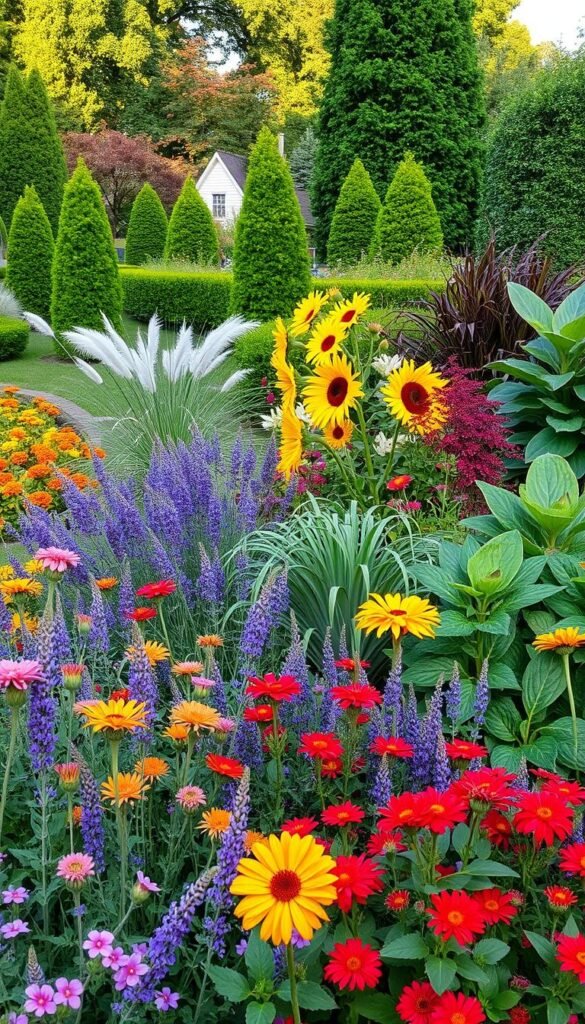
Smart plant selection turns your garden’s quirks into blooming successes. Start by getting your hands dirty—literally. Dig a handful of soil and squeeze it. Clay forms sticky clumps, sandy soil crumbles, while loam holds shape briefly before breaking apart. This simple test reveals which plants will thrive naturally in your space.
Selecting Plants Based on Soil and Water Needs
Match greenery to your ground conditions for healthier growth. Mediterranean herbs like lavender laugh at drought, while hydrangeas demand moist soil. Use this table to pair plants with your garden’s personality:
| Plant Type | Soil Preference | Water Needs | Seasonal Interest |
|---|---|---|---|
| Lavender | Gritty, well-drained | Low | Summer blooms |
| Hydrangea | Moist, rich | High | Spring-fall flowers |
| Hostas | Fertile, moist | Medium | Summer foliage |
| Boxwood | Most types | Low | Year-round structure |
For tricky soils, consider patio container gardening solutions. Acid-loving blueberries grow happily in pots filled with ericaceous compost, even if your native soil leans alkaline.
Layering with Perennials, Annuals, and Evergreens
Create depth by stacking plants like living Legos. Place tall foxgloves at the back, mid-height coneflowers in the middle, and creeping thyme up front. Evergreen shrubs like holly keep your garden lively in winter, while annual petunias fill gaps with summer color.
Remember: perennials need breathing room to establish roots. Space them 12-18 inches apart, using quick-growing marigolds or zinnias as temporary placeholders. This approach ensures year-round visual interest without overcrowding.
Incorporating Climbing Plants and Vertical Elements
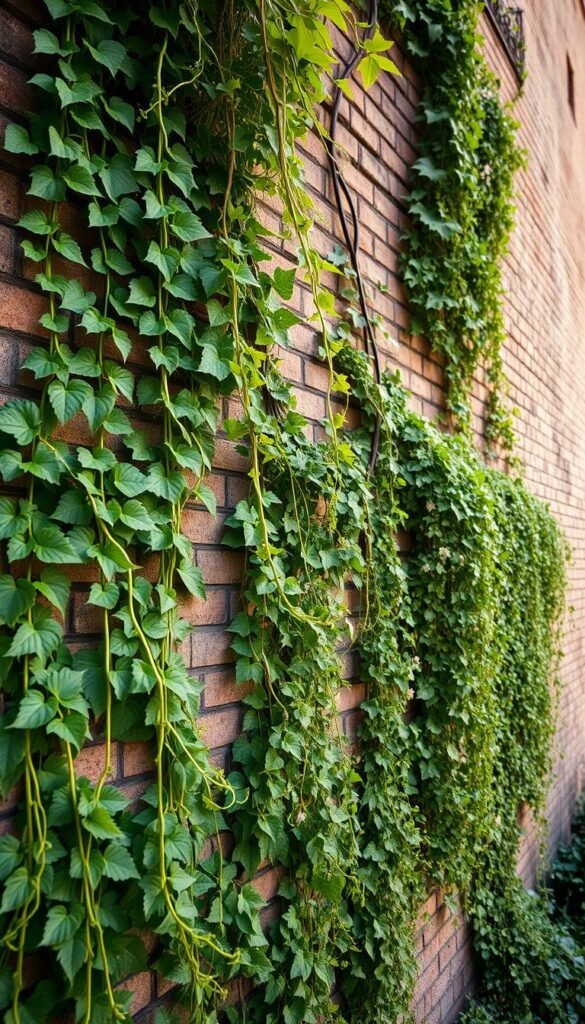
Elevate your garden’s charm by looking up – walls, fences, and pergolas become living art with strategic planting. Vertical growth solves space constraints while adding depth and movement to your landscape. The right climbers transform bland surfaces into textured displays that evolve through seasons.
Using Trellises, Pergolas, and Walls
Choose support structures that match your plants’ ambitions. Delicate sweet peas thrive on trellises, while vigorous wisteria needs sturdy pergolas. For quick coverage, annual climbers like morning glory race up DIY trellises in weeks.
Evergreen clematis armandii clothes walls year-round, its vanilla-scented blooms announcing spring. Pair with deciduous varieties for layered interest – try trumpet vine’s orange flowers against dark fence panels.
Enhancing Privacy and Aesthetics with Vines
Create natural screens using fast-growing climbers. Star jasmine masks chain-link fences while perfuming evening air. For shady spots, climbing hydrangea sticks to brick like green velvet.
Combine textures for maximum impact. Rambling roses weave through established ivy, offering floral bursts amid evergreen leaves. Remember: install supports before planting – young vines establish faster on fresh structures than weathered ones.
Establishing Hardscaping Elements for Structure
Think of hardscaping as your garden’s skeleton – get it right, and everything else falls into place naturally. Start by clearing outdated features like cracked concrete or synthetic turf. This blank canvas approach lets you shape your space without compromise.
Designing Functional Foundations
Position key structures where they’ll serve you best. Morning coffee spots crave sunrise views, while evening fire pits need wind protection. Use local stone for patios that mirror regional geology, or try composite decking for low-maintenance durability. One homeowner saved 40% by using repurposed materials for their retaining walls.
Selecting Materials That Last
Match materials to your home’s style and climate. Salt-air coastal gardens demand stainless steel fixtures, while arid regions suit porous flagstone. Always bury conduit for lighting cables during patio installation – future-you will thank present-you when adding festoon lights.
Leave breathing room between stonework and planting areas. A 6-inch gravel buffer prevents soil from staining pavers while allowing root growth. Remember: permanent features outlive trends. That curved fence you sketched? Build it before training climbing roses – adjustments become costly once concrete sets.

